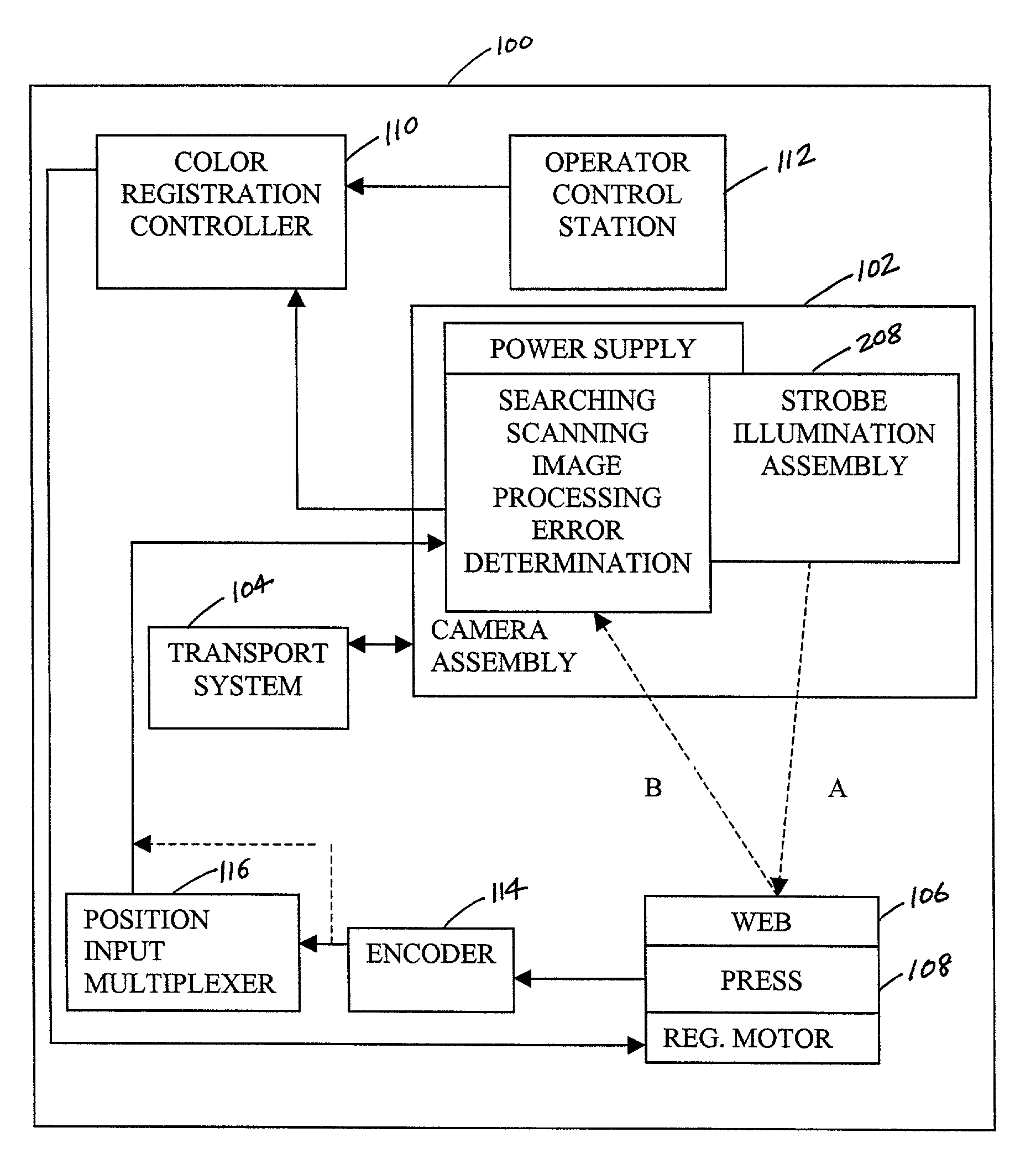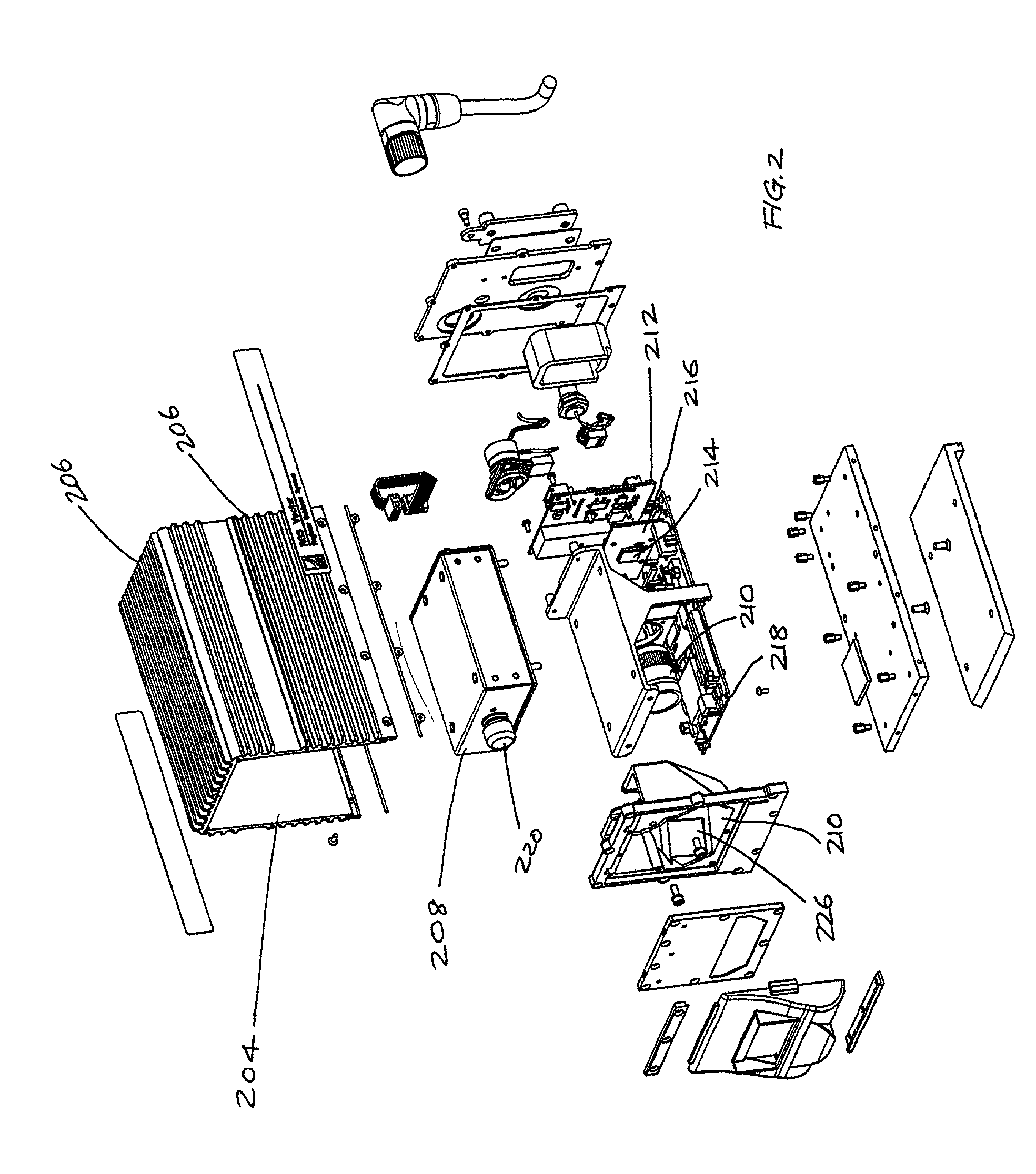Color registration control system for a printing press
a control system and printing press technology, applied in office printing, printing, instruments, etc., can solve the problems of inability to transmit an image from the scanning unit, introduce color register errors between different printing units, and print plates may not be mounted or setup correctly on the plate cylinder, etc., to reduce the time it takes, easy to setup, and less sensitive to alignment
- Summary
- Abstract
- Description
- Claims
- Application Information
AI Technical Summary
Benefits of technology
Problems solved by technology
Method used
Image
Examples
Embodiment Construction
[0035]In conjunction with the description of the preferred embodiment, a web offset printing press will be described. It should be noted, however, that the invention can be utilized on printing presses other than web offset presses.
[0036]Referring to FIG. 1, a color registration control system 100 is shown and includes a scanning unit or camera assembly 102 and an associated transport system 104. The transport system 104 can be of a manual or automated design. Preferably, an automated design is used such as is known in the art. Generally, an automated transport system can include a linear actuator and a motor with a motor controller. The actuator consists of a bar, carriage, coupling mechanism, transport mechanism (e.g. screw or belt), and position encoder. Optionally, the transport system 104 may also include limit switches, jog buttons (to allow the operator to move the carriage), and indicators such as the direction it is moving and whether or not the camera assembly 102 is track...
PUM
 Login to View More
Login to View More Abstract
Description
Claims
Application Information
 Login to View More
Login to View More - R&D
- Intellectual Property
- Life Sciences
- Materials
- Tech Scout
- Unparalleled Data Quality
- Higher Quality Content
- 60% Fewer Hallucinations
Browse by: Latest US Patents, China's latest patents, Technical Efficacy Thesaurus, Application Domain, Technology Topic, Popular Technical Reports.
© 2025 PatSnap. All rights reserved.Legal|Privacy policy|Modern Slavery Act Transparency Statement|Sitemap|About US| Contact US: help@patsnap.com



